
A Pacific storm is bringing areas of low elevation rain, moderate to heavy mountain snow, and high winds to the Northwest. Strong Santa Ana winds and very dry conditions are producing elevated to critical fire weather conditions in southern California. Isolated strong to severe thunderstorms are possible through early Wednesday morning across parts of northeast Texas into western Tennessee. Read More >
July of 2024 saw a meandering ridge of high pressure across the Rockies, which brought periods of very warm temperatures, as well as periods of abundant available moisture, heavy rainfall and much cooler temperatures to portions of south central and southeast Colorado. For the month of July as a whole, near to below normal temperatures and generally at to below normal precipitation were experienced across south central and southeast Colorado.
The following graphics depict monthly temperature and precipitation departures from normal across the state for the past month of July.
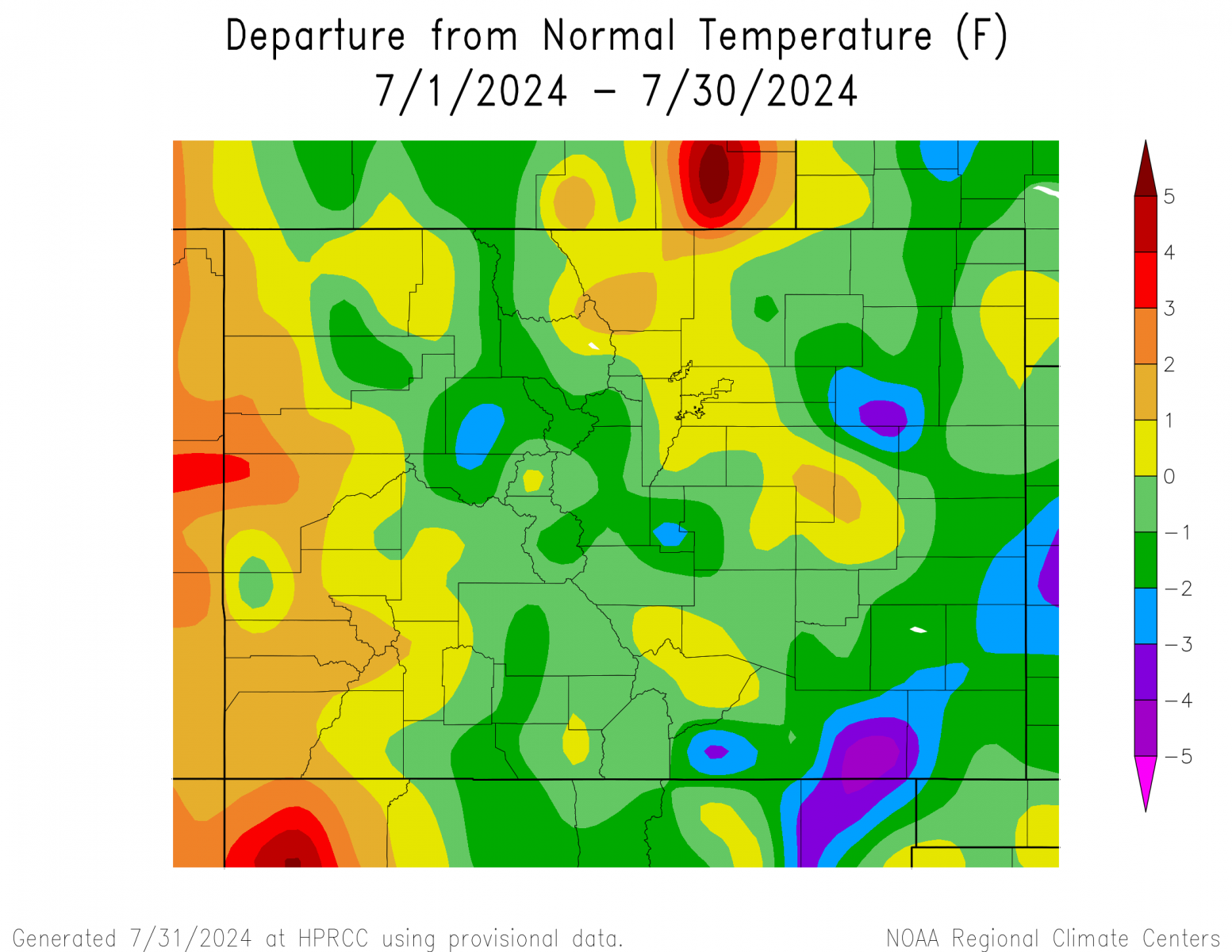 |
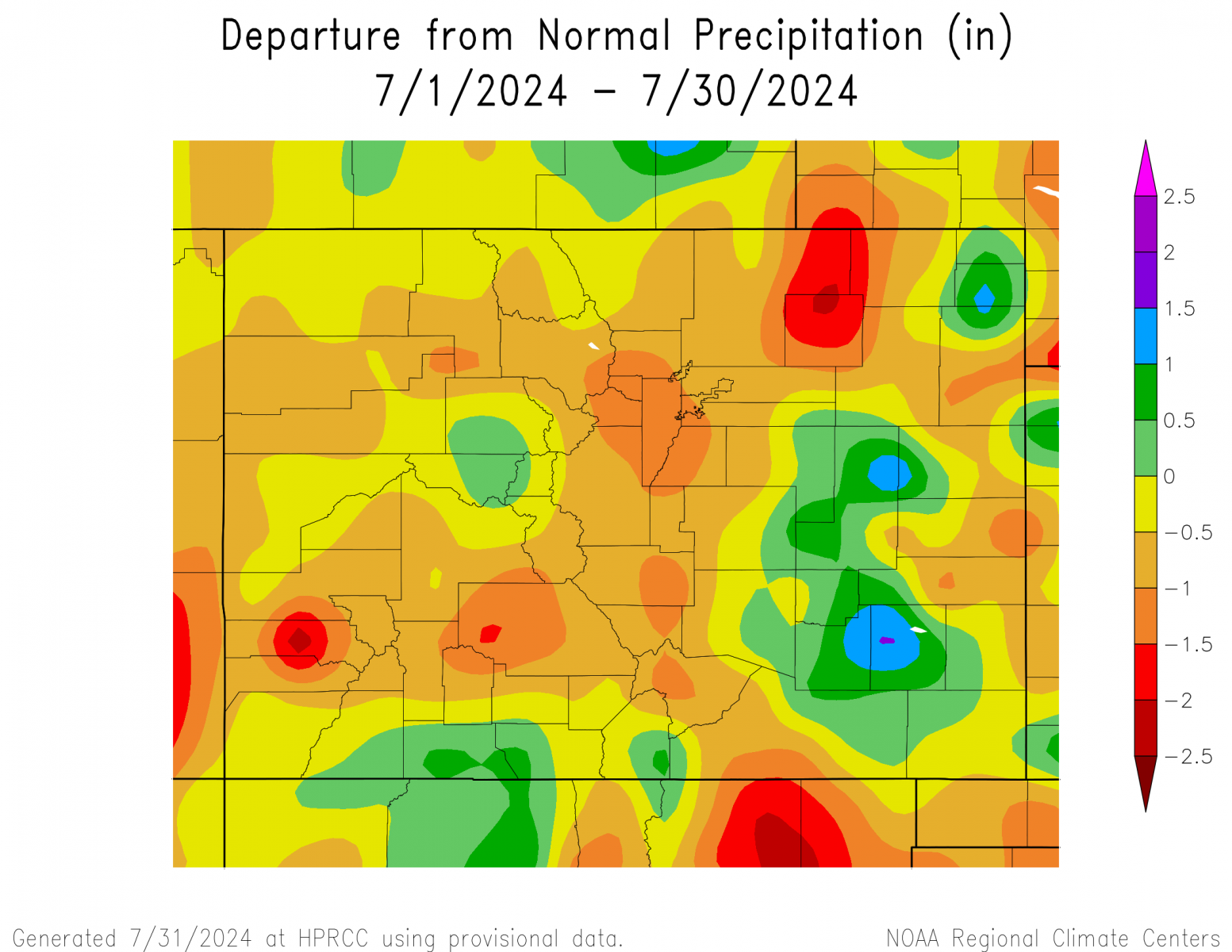 |
The preliminary average temperature in Alamosa for the past month of July was 65.1 degrees, which is 0.2 degrees below normal. The average July maximum temperature in Alamosa was 84.5 degrees, which is 1.2 degrees above normal. The average July minimum temperature in Alamosa was 45.7 degrees, which is 1.6 degrees below normal. Alamosa recorded 0.64 inches of precipitation through the month of July. This is 0.40 inches below normal and makes July of 2024 the 28th driest July on record. Alamosa set 2 daily record high temperatures in the month of July. (POR: 1932-2024)
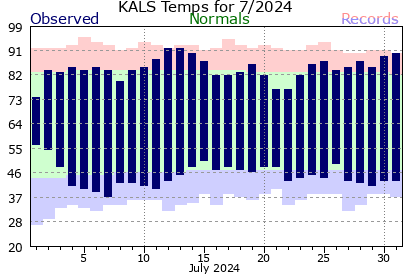 |
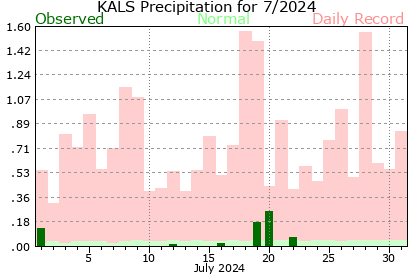 |
The preliminary average temperature in Colorado Springs for the past month of July was 72.6 degrees, which is 0.2 degrees above normal. The average July maximum temperature in Colorado Springs was 87.5 degrees, which is 1.0 degrees above normal. The average July minimum temperature in Colorado Springs was 57.7 degrees, which is 0.5 degrees below normal. Colorado Springs recorded 3.04 inches of precipitation through the month of July which is 0.08 inches below normal. Colorado Springs set 2 daily record high temperatures through the month of July, including July 12th, when the temperature topped out at 100F. This makes only the 12th time on record that the temperature was at or above the century mark in Colorado Springs. (POR: 1894-2024)
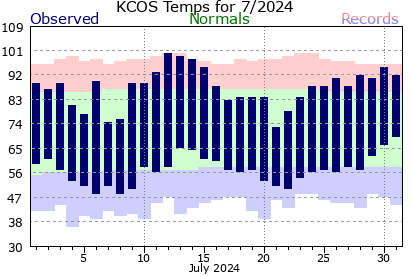 |
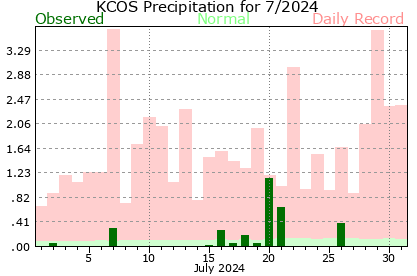 |
The preliminary average temperature in Pueblo for the past month of July was 76.7 degrees, which is 0.5 degrees below normal. The average July maximum temperature in Pueblo was 93.4 degrees, which is normal. The average July minimum temperature in Pueblo was 59.9 degrees, which is 1.1 degrees below normal. Pueblo recorded 2.45 inches of precipitation through the month of July, which is 0.56 inches above normal. Pueblo set 2 daily record high temperatures through the month of July. (POR: 1888-2024)
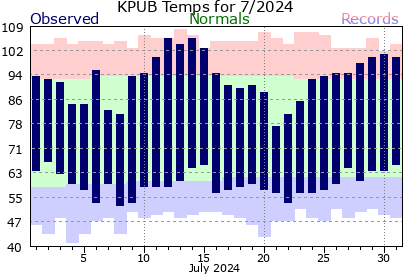 |
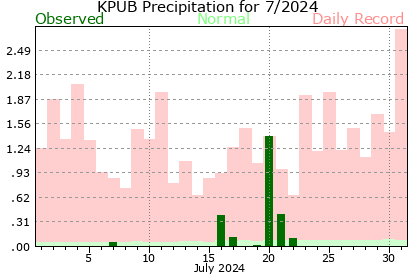 |
Looking ahead into August in Alamosa, the average high and low temperatures of 82 degrees and 48 degrees on August 1st, cool to 79 degrees and 43 degrees by the end of the month. The average temperature for the month of August in Alamosa is 63.2 degrees. Alamosa averages 1.29 inches of precipitation through the month of August. On average, August is the wettest month of the year in Alamosa.
In Colorado Springs, the average high and low temperatures of 86 degrees and 59 degrees on August 1st, cool to 82 degrees and 54 degrees by the end of the month. The average temperature for the month of August in Colorado Springs is 70.1 degrees. Colorado Springs averages 2.96 inches of precipitation through the month of August. On average, August is the 2nd wettest month of the year in Colorado Springs.
In Pueblo, the average high and low temperatures of 92 degrees and 62 degrees on August 1st, cool to 88 degrees and 56 degrees by the end of the month. The average temperature for the month of August in Pueblo is 74.8 degrees. Pueblo averages 2.11 inches of precipitation through the month of August. On average, August is the wettest month of the year in Pueblo.
Below is the Climate Prediction Center's (CPC) temperature and precipitation outlook for August of 2024, which leans to above normal temperatures and below normal precipitation across south central and southeast Colorado, save for the potential for near normal precipitation across southwest Colorado.
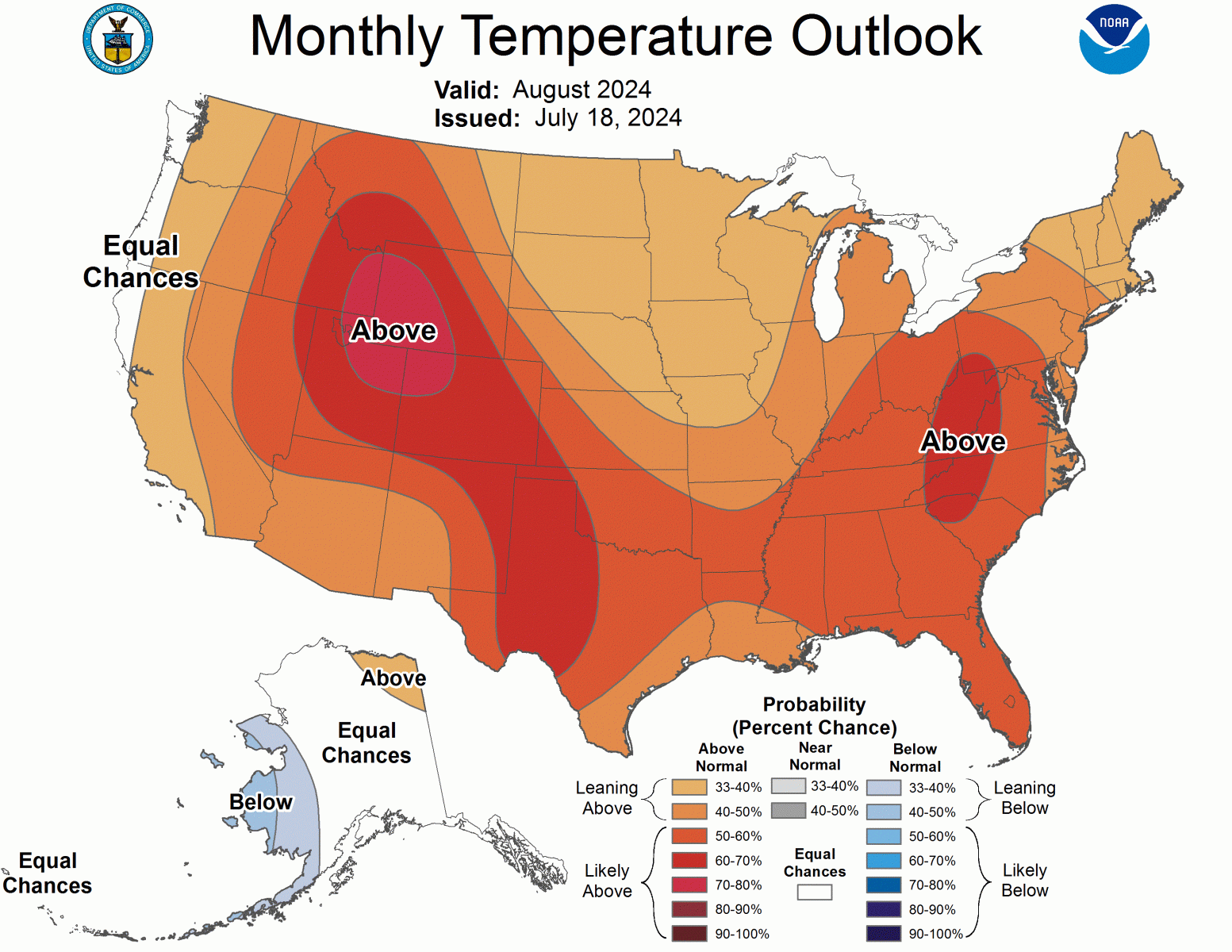 |
.gif) |